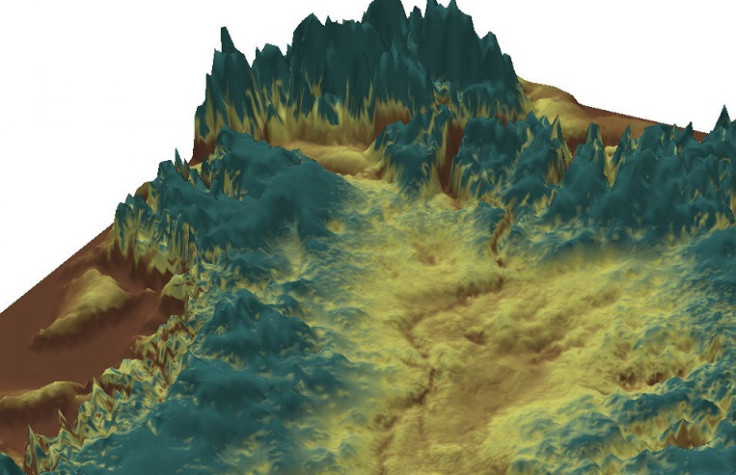Massive 466-Mile-Long Canyon Discovered Underneath Greenland Ice Sheet

Scientists have found a massive, ancient canyon beneath the ice sheet covering Greenland.
The newly discovered canyon is about 466 miles long, 6.2 miles across at its widest, and reaching depths of more than 2,600 feet -- deep enough to comfortably hold the Empire State Building stacked on top of the Eiffel Tower, with room to spare. The researchers, who describe the canyon in the latest issue of the journal Science, think the canyon formed long before the arrival of the 660,000-square-mile ice sheet that has covered most of Greenland’s surface for the past few million years.
"With Google Streetview available for many cities around the world and digital maps for everything from population density to happiness, one might assume that the landscape of the Earth has been fully explored and mapped,” lead author and University of Bristol researcher Jonathan Bamber said in a statement. “Our research shows there's still a lot left to discover."
Bamber and his colleagues stumbled across this new canyon by examining radar data collected over the past several decades, mostly by NASA and other scientists. Certain frequencies of radio waves can penetrate through the thick ice sheet and reveal the structure of the landscape locked beneath the frosty crust.
"It is quite remarkable that a 750km-long channel the size of parts of the Grand Canyon is discovered in the 21st century below the Greenland Ice Sheet,” NASA researcher Michael Studinger, a project scientist on the agency’s Operation IceBridge, a mission taking a close look at Earth’s polar ice, said in a statement. “It shows how little we still know about the bedrock below large continental ice sheets."
The canyon extends from near the center of Greenland to the northern coast of the island, ending in a fjord that empties into the Arctic Ocean. Scientists think the canyon plays a large role in transporting the water from the ice sheet’s melting. Millions of years ago, before the ice sheet formed, the canyon was likely a conduit for a major river.
David Vaughan, a researcher based at the British Antarctic Survey and a coordinator at study funder ice2sea, said the canyon will help scientists peer into Greenland’s past. And, since the melting of the Greenland ice sheet contributes to sea-level rise, the canyon still has a role in shaping our present and future.
"A discovery of this nature shows that the Earth has not yet given up all its secrets,” Vaughan said in a statement.
SOURCE: Bamber et al. “Paleofluvial Mega-Canyon Beneath the Central Greenland Ice Sheet.” Science 341: 997 – 999, 30 August 2013.
© Copyright IBTimes 2024. All rights reserved.











